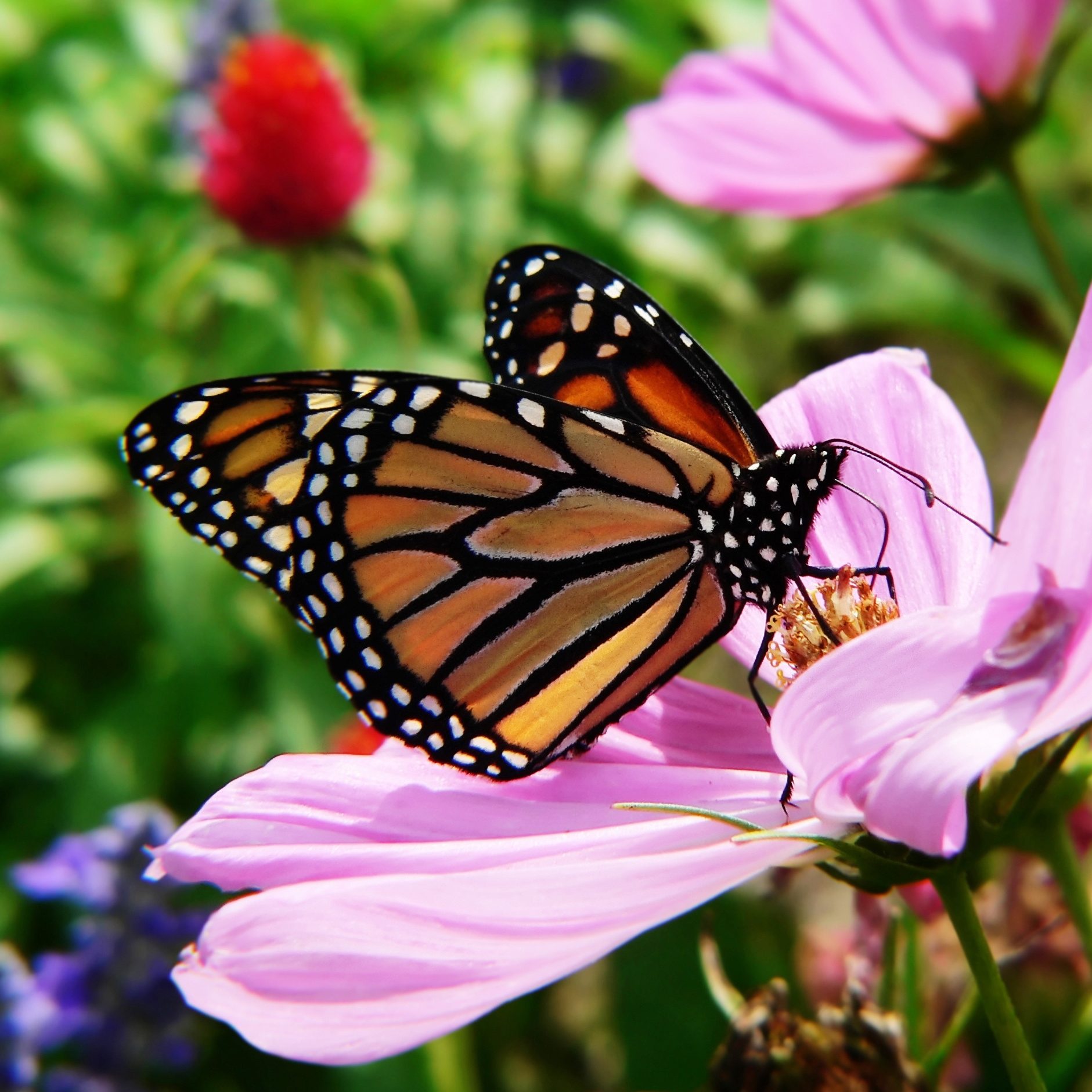
“The butterfly counts not months but moments, and has time enough.”
Rabindranath Tagore
With bees on the decline, we need to look to other beneficial insects to flutter in and help us pollinate our gardens. Fortunately for us, butterflies are lovely to watch as well as quite helpful in the garden, plus they play an important role in the ecosystem.
Butterfly-Friendly Gardening
Cultivate a garden full of these pretty pollinators by building an outdoor space that is appealing to these delicate insects. Here are a few tips to help attract them to your garden:
Butterflies absolutely love variety. Plant a mix of perennials, annual flowers, and attractive shrubs that bloom at different times throughout the season. An easy way to sow lots of blooms is to plant a wildflower seed mix in your garden, or allow space in your yard for a meadow.
Butterflies thrive in warm environments. Choose plants that bloom in full sun, so they have plenty of places to perch and rest their wings. If you spot butterflies basking in your garden, you are on the right path.Give them something to drink. Leave shallow dish of water out in the sun, or include a fountain or birdbath in your garden decor.
Encourage butterflies to reproduce in your garden by providing sustenance for them as they grow. Include host plants such as milkweed, or let parts of your garden go untamed with native plants and weeds, which provide shelter for young caterpillars.
Butterflies love blooms, but not all flowers are created equal. To get the best results, plant their favorite flowers.
Asclepias (Milkweed) is a natural host plant for butterflies in all stages and is a particular favorite of Monarchs. Host plants are meant to be devoured; young caterpillars will feast on the juicy foliage, while adults get their fill of delicious nectar. By planting a couple of varieties in your garden, you’ll be sure to pull in the pollinators. For best results, try Butterfly Weedor Swamp Milkweed.
Lavender is an excellent choice for butterflies for its fragrant flowers. The scent of these blooms is not only relaxing for human beings, but intoxicating to butterflies as well! For sensational flowers that look great in the garden, try our Hidcote Lavender.
Leucanthemum (Shasta Daisy) is a classic in the a meadow garden. With bright yellow centers surrounded by a array of white petals, they serve as a perfect landing pad for resting butterflies.
Monarda (Bee Balm) isn’t just for the bees! In fact, these brightly colored blooms are a favorite of pollinators as well. The vibrant colors pop against dark foliage and draw them in to taste the delightfully sweet nectar.
For more butterfly-friendly plants, see our list of Butterfly Nectar and Host Plants.
Identifying Monarchs and More
Here in Massachusetts, we’re lucky to see many types of butterflies. Here are a few of the most common and popular butterflies and how to identify them:
Monarchs are among the most well-known species, noted for their vibrant orange-red wings decorated with delicate white spots and black veins that look like paper-thin stained glass. Their beauty makes it clear why they are such a welcome visitor in our gardens. They are natural travelers, migrating thousands of miles each year to pass through our area. Be a good host and welcome them into your garden by planting plenty of milkweed.
Great Spangled Fritillaries are notable for their large size. These gentle giants have wings in tawny and amber colors, decorated with dainty black stripes and silver spots. They have a strong family resemblance with the rest of the larger Fritillaries who share their brown bodies and orange, yellow, and black spots. These impressive butterflies can sometimes be confused for their distant cousins, the Monarch, but they don’t migrate nearly as far. Keep them around by planting Milkweed, Verbena, Echinacea, and Monarda.
Swallowtails are a big family of butterflies that love it here in Massachusetts. They come in a wide variety of colors and sizes, but all have black-based wings. Black Swallowtails are all black with white or yellow spots running along the bottom edge of their wings. Giant Swallowtails are considerably larger in size and will have two lines of prominent, pale yellow spots on their wings. Eastern Tiger Swallowtails will have mostly yellow wings, with black tiger stripes. Pipevine and Spicebushvarieties will be black with bright blue on the bottom of their wings. They love the floral tastes of Wild Cherry, Lilac, and Milkweed.







